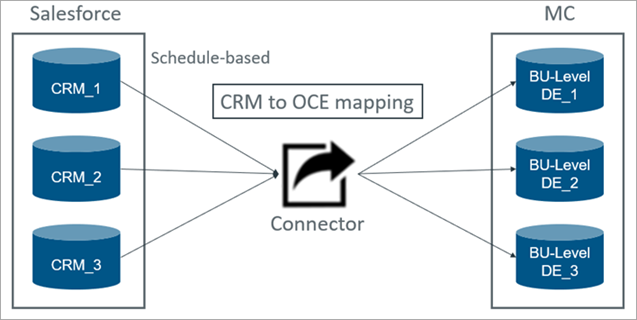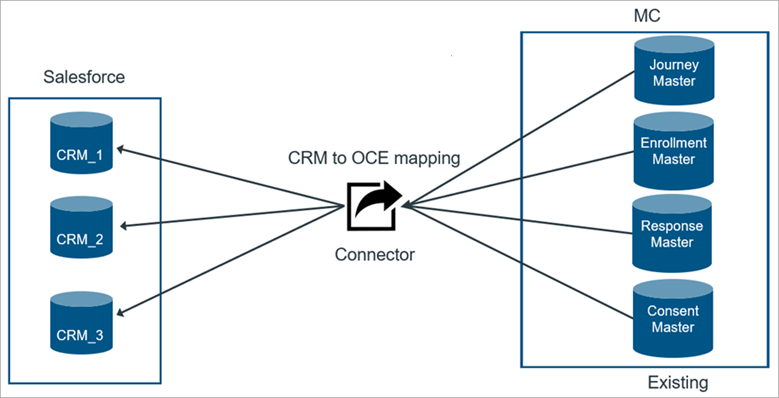High-Level Architecture Overview
The high-level architecture is outlined following. It uses modern micro services architecture and communicates with Marketing Cloud using Marketing Cloud native SOAP and REST APIs.
No database is used for the app’s business logic and persistency (apart from some minor usage of AWS Dynamo DB for caching and credentials encryption). Instead, IQVIA has created a Comprehensive Data Model that's specifically suited for life sciences business needs. This data model is hosted within Marketing Cloud using its data extensions and is deployed with each version of IQVIA’s OCE Digital.
CRM to OCE Diagram

All entities are synchronized every hour. The Connector pulls any new data since the last sync date that was recorded for that object in the system.
Data from each object is loaded to an SDE. Each object has an SDE generated. Each Sales org has its own set of SDEs for the objects supported out-of-the-box. These can be found in the root BU in Shared Items > Shared Data Extensions > _IQ > _Master Data >_OCE > [CRM Org ID] > Inbound.

OCE to CRM Diagram

All entities are synchronized every hour (kicked off by a Marketing Cloud automation).
The connector pulls any new data since the last sync date that was recorded for that object in the system. Data from each object is loaded to an OSDE. Each object has an OSDE generated. Each Sales org has its own set of OSDEs for the objects supported out-of-the-box. These can be found in the root BU in Shared Items > Shared Data Extensions > _IQ > _Master Data >_OCE > [CRM Org ID] > Outbound.
Data is routed to different CRM accounts based on which business unit the data is associated with (based on what BUs are selected for a CRM connection in the OCE Personal Connection admin section of OCE Digital).